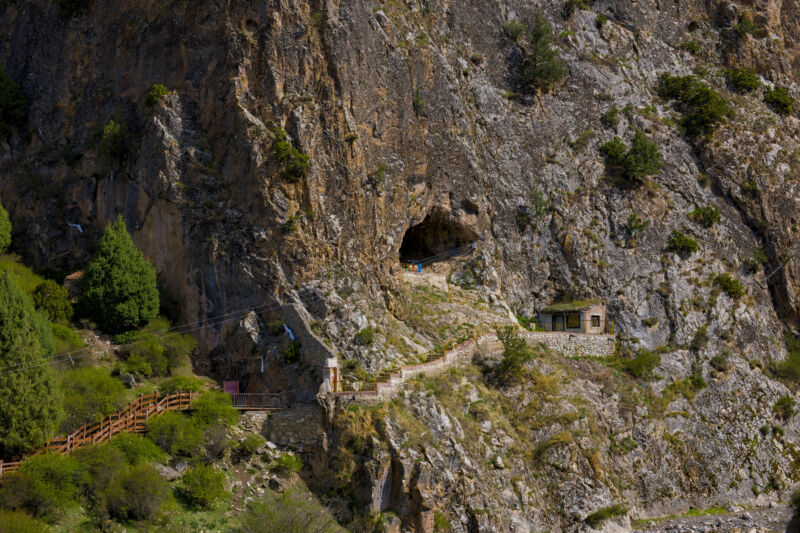High-altitude cave used by Tibetan Buddhists yields a Denisovan fossil

Enlarge / The Baishiya Karst Cave, where the recently analyzed samples were obtained. (credit: Dongju Zhang’s group (Lanzhou University))
For well over a century, we had the opportunity to study Neanderthals—their bones, the items they left behind, their distribution across Eurasia. So, when we finally obtained the sequence of their genome and discovered that we share a genetic legacy with them, it was easy to place the discoveries into context. In contrast, we had no idea Denisovans existed when sequencing DNA from a small finger bone revealed that yet another relative of modern humans had roamed Asia in the recent past.
Since then, we’ve learned little more. The frequency of their DNA in modern human populations suggest that they were likely concentrated in East Asia. But we’ve only discovered fragments of bone and a few teeth since then, so we can’t even make very informed guesses as to what they might have looked like. On Wednesday, an international group of researchers described finds from a cave on the Tibetan Plateau that had been occupied by Denisovans, which tell us a bit more about these relatives: what they ate. And that appears to be anything they could get their hands on.
The Baishiya Karst Cave
The finds come from a site called the Baishiya Karst Cave, which is perched on a cliff on the northeast of the Tibetan Plateau. It’s located at a high altitude (over 3,000 meters or nearly 11,000 feet) but borders a high open plain, as you can see in the picture below.



